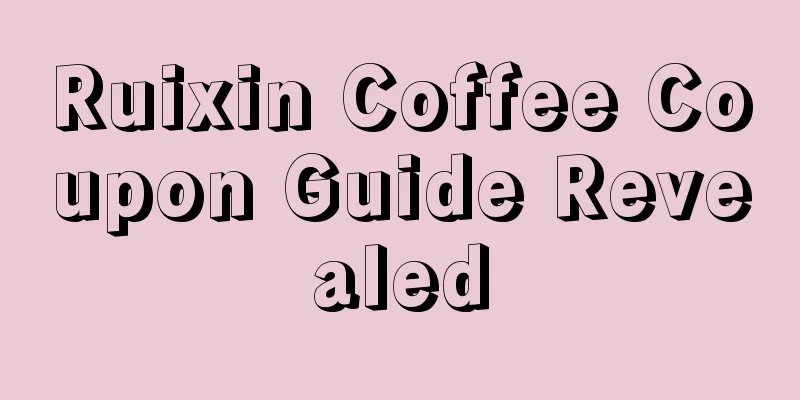Coffee beans made from elephant dung?

The origin of coffee beansCoffee beans are a popular beverage ingredient, but you might be surprised to know that some coffee beans actually come from elephant dung. This special coffee bean is called "elephant dung coffee" or "black elephant dung", and it has attracted much attention in the market. The production process of elephant dung coffeeMaking elephant dung coffee requires a unique and complex process. First, farmers place the ripe coffee cherries they have picked in an enclosed area for the elephants to eat. When the elephants digest the cherries, their feces contain undigested whole coffee beans. Next, the farmers collect the manure with the intact coffee beans, wash and sterilize them, then dry and roast them for the best taste and aroma. Why choose to use elephant dung?You might be wondering why someone would choose to use elephant dung to make coffee beans. In fact, this special production method is not just for eye-catching, but because the elephant's digestive system is able to process coffee cherries in a special way. As the coffee cherries go through the digestive process in the elephant's body, their interaction with the elephant's stomach acid and enzymes causes some of the bitter substances in the beans to be broken down. As a result, the final coffee beans have a less bitter taste and a richer flavor. Taste Elephant Dung CoffeeWhile it may sound unacceptable, many people consider tasting elephant dung coffee to be a unique and magical experience. The special production method gives the beans a unique and complex flavor. Elephant dung coffee is said to have a soft, smooth taste with a rich chocolate-like aroma. It is often described as having rich flavors such as fruit, nuts and caramel, without being bitter. Market response and controversyElephant dung coffee has attracted much attention in the market because its special production method has aroused people's interest. However, this coffee has also caused some controversy. Some people believe that using animal waste to make food is unethical and may have a negative impact on animal welfare. In addition, some people are also concerned about whether this special production method meets hygiene standards. in conclusionWhether you are willing to try elephant dung coffee or not, it is a topic of curiosity and surprise. This unique production method gives the beans a unique and complex flavor, but it also raises some ethical and sanitary controversies. Regardless, when choosing to drink coffee, make sure you choose a product that aligns with your values and health standards. |
<<: Coffee Bean Classification: Learn about the different types of coffee beans
>>: Why can’t a blender grind coffee beans?
Recommend
Coffee exploration journey, looking for delicious and cheap coffee brands
Abstract: This article records a coffee explorati...
Exploring the top of black coffee, which brand of black coffee is the best?
Which brand of black coffee is the best? It depen...
How long can coffee beans be stored?
The shelf life of coffee beans and its determinin...
How long do the effects of coffee last?
How long do the effects of coffee last? Coffee is...
The world's top coffee bean producing areas: the source of excellent taste and unique flavor
The world's top coffee bean producing areas: ...
Eight benefits and potential risks of coffee. Do you really understand coffee?
Coffee has eight benefits, including refreshing t...
Starbucks Coffee Beans: Best Choice
introduction Starbucks coffee beans are a world-r...
The characteristics of coffee beans are revealed, allowing you to taste a different coffee experience
Characteristics of coffee beans Coffee beans are ...
The Art of Coffee Beans
The Art of Coffee Beans Coffee, as a popular drin...
Coffee Bean Grinding and Brewing Guide
Coffee Bean Grinding and Brewing Guide Coffee is ...
Coffee pros and cons: the benefits and drawbacks of frequent drinking
The pros and cons of coffee Coffee is a widely co...
Starbucks hot drink recommendations: the best coffee options
Starbucks hot drink recommendation: the best coff...
Is it too much or moderate for students to drink one cup of coffee a day?
Whether drinking a cup of coffee a day is excessi...
What are the two main types of coffee beans?
The History and Global Distribution of Coffee Bea...
Coffee tour, explore the unique charm of different varieties and flavors
Abstract: This coffee journey will take you to ex...









